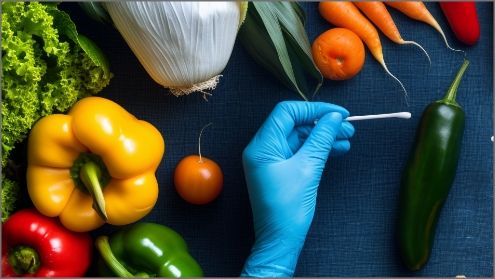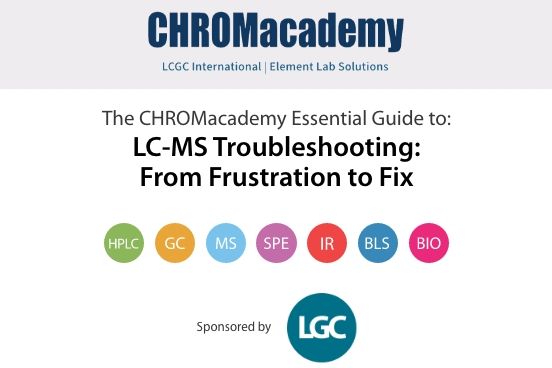
LC–MS
Latest News
Latest Videos

More News

Webinar Date/Time: Mon, Nov 3, 2025 11:00 AM EST

Kerstin Thurow, who achieved first professorship in “Laboratory Automation” at the Faculty of Engineering at the University of Rostock, in Germany, offers insights into the constantly-evolving field of laboratory automation.

Webinar Date/Time: Thu, Nov 6, 2025 11:00 AM EST

This week, LCGC International published a variety of articles on hot topics in separation science. From an interview about the latest advancements in supercritical fluid chromatography (SFC), a news article about a new product from Thermo Fisher, and an article about bioanalytical liquid chromatography–mass spectrometry (LC–MS), we’ve highlighted some of the most popular articles that were published this week.

The main objectives of this study were to develop a method for the measurement of cocaine derivatives in oral fluid by coupling a probe electrospray ionization (PESI) source with quadrupole time-of-flight (QTOF). The three cocaine derivatives considered were: benzoylecgonine (BZE), cocaine, and ecgonine-methylester (EME).

Ida Marie Marquart Løber explores postmortem interval estimation using UHPLC–QTOF-MS and machine learning, profiling rat tissue metabolites and outlining pathways for human adaptation toward objective, AI-driven forensic timelines.

Webinar Date/Time: Tuesday, September 30, 2025 8am PDT | 11am EDT | 4pm BST | 5pm CEST

Webinar Date/Time: Thursday, September 18, 2025 8am PDT | 11am EDT | 4pm BST | 5pm CEST

This study reports a validated rapid, low-volume LC–MS/MS method capable of simultaneously quantifying remifentanil, etomidate, and rocuronium across a wide concentration range.

In this article, you’ll find some of the top content that was published on LCGC this week, including calls for new chromatography technologies and interviews with rising stars in the field.

To create a new approach for monitoring and quantifying free fatty acids (FFAs), Chinese researchers combined stable isotope derivatization coupled with liquid chromatography–triple quadrupole mass spectrometry (ID-LC-QQQ-MS).

Webinar Date/Time: Thursday, August 21, 2025 8am PDT | 11am EDT | 4pm BST | 5pm CEST

Researchers from Comenius University Bratislava used LC–MS/MS to analyze albendazole substances in plasma samples.

To better detect cardiovascular diseases in people, researchers used high-performance liquid chromatography–tandem mass spectrometry (HPLC–MS/MS) to simultaneously quantify metabolites in human plasma.

In this article, you’ll find some of the top content that was published on LCGC this week, including our upcoming forensic science content series and an interview on preanalytical factors for ethanol testing.

Researchers at the Institute of Marine Research in Bergen, Norway used liquid chromatography–mass spectrometry to analyze resolvins in fish and human cells.

Antiretroviral drug residues were monitored in breastmilk samples using ultrahigh-performance liquid chromatography–tandem mass spectrometry (UHPLC–MS/MS).

Bioactive compounds extracted from plants are revered for their abilities to enhance human health. However, due to the complex matrices of plant foods, the qualitative and quantitative analysis of metabolites in plant foods requires a prior separation step.

Webinar Date/Time: Wed, Aug 13, 2025 9:00 AM EDT

In this article, you’ll find some of the top content that was published on LCGC this week, including details on the recent merger between Waters Corporation and BD Biosciences.

Waters Corporation is merging with BD’s Biosciences and Diagnostic Solutions business in a $17.5 billion deal to expand its capabilities in life sciences and diagnostics.

This week, LCGC International published a variety of articles on hot topics in separation science. Several analytical techniques were covered in these articles, including gas chromatography–mass spectrometry (GC–MS) and liquid chromatography–MS (LC–MS).

Webinar Date/Time: Thursday, July 17, 2025 8am PDT | 11am EDT | 4pm BST | 5pm CEST

To better conduct the analysis of nucleoside analogues, hydrophilic interaction liquid chromatography–tandem mass spectrometry (HILIC-MS/MS) was used to quantify antitumor prodrugs and their metabolites.

Using two-dimensional liquid chromatography–mass spectrometry, a new workflow was developed to characterize phosphorodiamidate morpholino oligomers, which can help treat infectious diseases.













